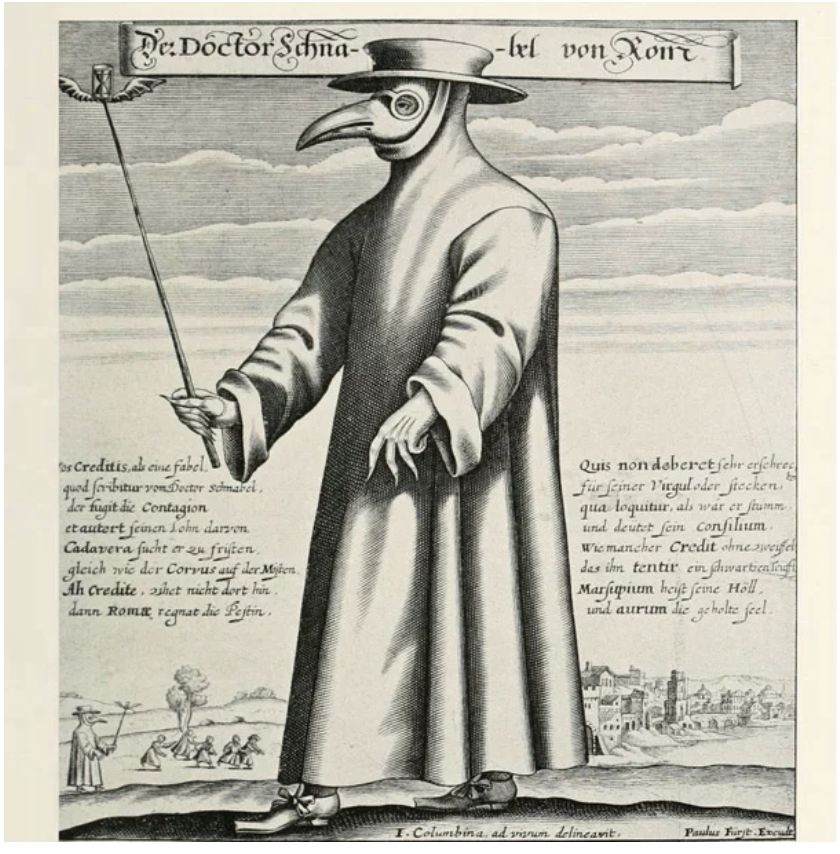
“The Black Death [Black Plague] is estimated to have killed 30% to 60% of Europe’s population. In total, the plague may have reduced the world population from an estimated 475 million to 350–375 million in the 14th century. It took 200 years for Europe’s population to recover to its previous level, and some regions (such as Florence) did not recover until the 19th century. Outbreaks of the plague recurred until the early 20th century.” – Wikipedia
You thought Coronavirus was bad?
Watch this 10-minute video and learn about the Black Plague of the 1300s.
The Black Plague was worldwide and may killed somewhere between 80-100 million people worldwide in the 1300s.
It took 200-years for Europe’s population to recover to its pre-plague level!
Outbreaks of the Black Plague recurred into the early 1900s!
Current Coronavirus cases and deaths found here:
We know what you’re thinking: “Why did doctors wear those terrifying beaked masks during the Black Plague?”

Why Doctors Wore Beaked Masks During the Black Plague:
The mask had glass openings in the eyes and a curved beak shaped like a bird’s beak with straps that held the beak in front of the doctor’s nose.[3] The mask had two small nose holes and was a type of respirator which contained aromatic items.[4] The beak could hold dried flowers (including roses and carnations), herbs (including mint), spices, camphor, or a vinegar sponge.[5][6] The purpose of the mask was to keep away bad smells, known as miasma, which were thought to be the principal cause of the disease, before it was disproved by germ theory.[2][3] Doctors believed the herbs would counter the “evil” smells of the plague and prevent them from becoming infected.[3]
The beak doctor costume worn by plague doctors had a wide-brimmed leather hat to indicate their profession.[2][7] They used wooden canes in order to point out areas needing attention and to examine patients without touching them.[8] The canes were also used to keep people away,[9] to remove clothing from plague victims without having to touch them, and to take a patient’s pulse.[2][10]
Black Death Facts from Wikipedia:
The Black Death, also known as the Pestilence, the Great Bubonic Plague, the Great Plague or the Plague, or less commonly the Great Mortality or the Black Plague, was the most devastating pandemic recorded in human history, resulting in the deaths of an estimated 75 to 200 million people in Eurasia,[1] peaking in Europe from 1347 to 1351.[2][3][4] The bacterium Yersinia pestis, which results in several forms of plague (septicemic, pneumonic and, the most common, bubonic), is believed to have been the cause.[5] The Black Death was the first major European outbreak of plague and the second plague pandemic.[6] (The first was the Plague of Justinian.) The plague created religious, social, and economic upheavals, with profound effects on the course of European history.
The Black Death probably originated in Central Asia or East Asia,[7][8][9][10][11] from where it travelled along the Silk Road, reaching Crimea by 1343.[12] From there, it was most likely carried by fleas living on the black rats that traveled on Genoese merchant ships, spreading throughout the Mediterranean Basin, reaching the rest of Europe via the Italian Peninsula.
The Black Death is estimated to have killed 30% to 60% of Europe’s population.[13] In total, the plague may have reduced the world population from an estimated 475 million to 350–375 million in the 14th century.[14] It took 200 years for Europe’s population to recover to its previous level,[15] and some regions (such as Florence) did not recover until the 19th century.[16][17][18] Outbreaks of the plague recurred until the early 20th century.